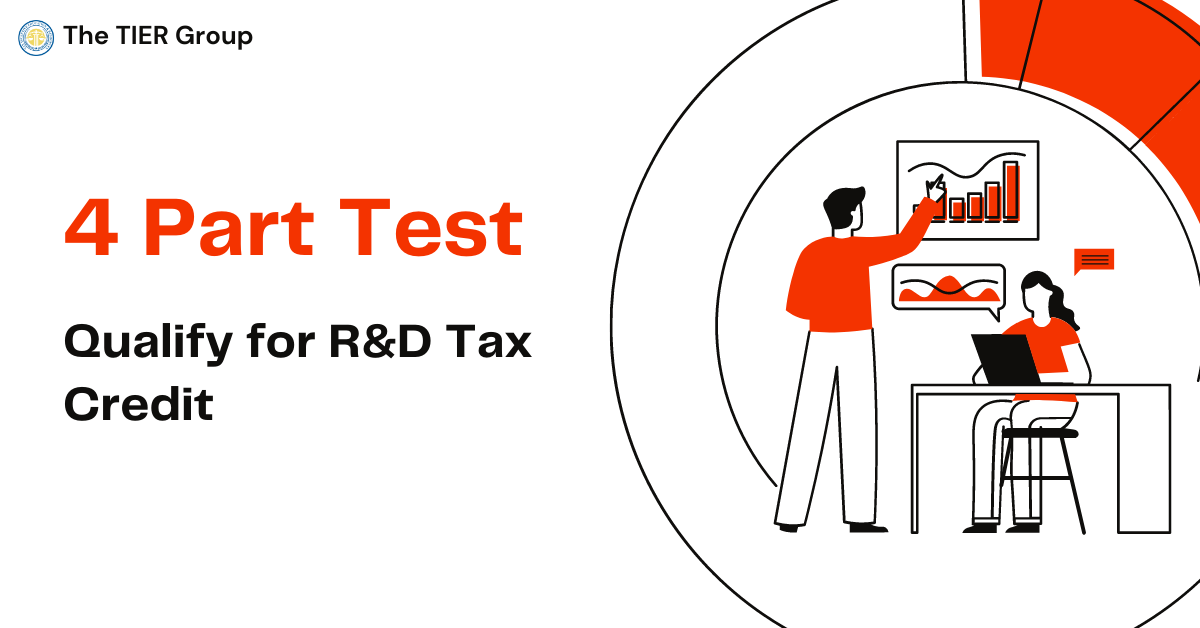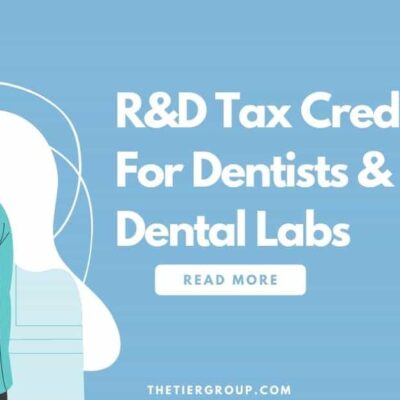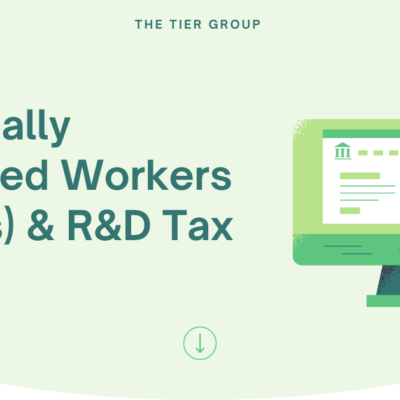
4 Part Test to Qualify for Research & Development Tax Credit
The research and development (R&D) tax credit is a great way for businesses to open up their pockets with more cash. Unfortunately, many people have misconceptions about the R&D tax credit eligibility. They think that only certain industries like engineering, software, or manufacturing can benefit from it and ultimately miss out on significant cash savings.
When it comes to determining if your company can take advantage of the tax credit, there are some important guidelines. The most prominent one is called ‘The 4 Part Test.’ This comes within the Internal Revenue Services (IRS) code. It determines whether certain expenses qualify as qualifying research activities for credits. To simplify the qualifying process, we have come up with the detailed summary of the R&D tax credit 4 part test below.
Understanding The R&D 4 Part Test
Unfortunately, many business owners only think about labs, test tubes, and beakers when it comes to “R&D.” The government gives you tax credits for your research and development activities, so it totally makes sense to explore whether any of the operations in your company may qualify for it or not. Below mentioned are the industries that can take advantage of this lucrative incentive and improve your products and processes:
- Medical devices, pharmaceuticals, and biotech
- Financial services like online brokerage trading
- Blockchain and software development
- Chemical companies, oil, and energy
- Transportation and automotive
- Bio-flavoring and food science
- Bio-flavoring and food science
- Engineering and architecture
- Defense and aerospace
- 3D printing and robotics
- Manufacturing
If one of these verticals is a part of your business, you can claim for the R&D tax credit. However, performing these activities is not the only thing you need for earning this incentive. You must undergo the 4-part test on a project basis.
The combination of the following tests determines if your project includes the qualifying research activities.
#1 Technological in Nature
The qualifying activity for research credit must primarily rely on the principles of engineering, computer science, biological sciences, or physical sciences. When you’re looking for a creative and new way to innovate, your innovations must be based on principles from the physical sciences as well as other relevant disciplines. In food production, for instance, adding more salt will not necessarily qualify – but methods involving hard science such as enhancing flavor or prolonging freshness might do so!
#2 Process of Experimentation
The qualifying activity must establish the process of experimentation that involves either of the following:
- Confirmation of hypotheses through trial and error
- Discarding of hypotheses
- Testing and/or modeling
- Simulation; evaluation of alternatives
- Refining
- Simulation
#3 Elimination of Uncertainty
The intent of your research and development activity must be to eliminate uncertainty regarding the method or capability for improving the appropriateness of your product design or developing a process or product.
#4 Permitted Purpose
The research activity must relate to an improved or new business component’s function, composition, quality, reliability, or performance. It is not necessary to discover an advancement or innovation that is new to your industry. All you have to do is to constitute an innovative way that is new to you and your business’ products or processes.
The credit is intended for activities that qualify beyond definitions stipulated by the four-part test, including ones that advance design or obtain cost reductions. Examples include pre-production prototypes and models of products as well as construction sites where significant amounts are spent on correcting defects in an existing process.
In addition, there can be some other types depending upon what you’re trying to do with your project.
Key Exclusions to Research Credit Qualification
Certain activities can automatically exclude your project from the R&D tax credit qualification. The following are some examples of such activities:
- Research in economics, business management, behavioral sciences, and arts
- Research conducted after the launch of commercial production
- Research conducted outside the U.S.
- Funded research
How We Can Help You With Your Tax Credit Queries
The R&D tax credit is a great incentive for innovation, but it can be difficult to navigate the intricacies of claiming this benefit. If you’re not sure what changes have been made by the IRS or how they might affect your taxes next year- don’t worry! We’re here with experience in all research and development-related things. We help get any questions answered so that no stone goes unturned when maximizing your potential tax credit benefits.
Book your call today to find out if you are eligible for the R&D tax credit.



